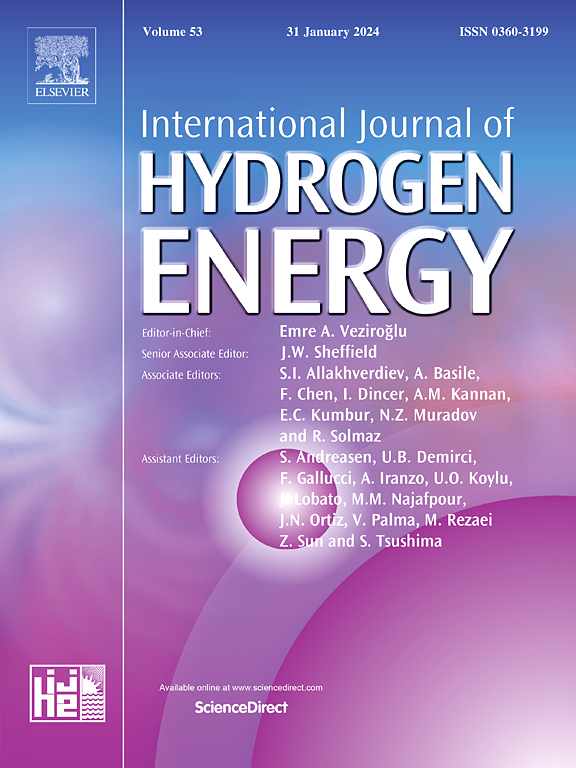Fabrication of centimeter-scale MoTe2 layers with high chemical stability for hydrogen evolution application
IF 8.1
2区 工程技术
Q1 CHEMISTRY, PHYSICAL
引用次数: 0
Abstract
Two-dimensional transition metal dichalcogenides (2D-TMDs) are suitable candidates for the hydrogen evolution reaction (HER) in water splitting. Among the different phases of TMDs, semi-metallic and metallic phases have shown greater efficiency for HER. However, achieving large-scale production of stable, semi-metallic or metallic phases of TMDs is challenging. We report large-scale growth of semi-metallic 1T′-MoTe2 on three different substrates: sapphire, SiO2/Si, and fused quartz with an approach to transfer on flexible substrates with increased stability. Due to rapid oxidation of MoTe2 flakes upon exposure to air, we explored a new transfer strategy using gold deposition to easily transfer flakes from the growth substrate to a flexible substrate. The gold coating ensures protective coverage and acts as a conducting medium after transfer. High activity was observed in MoTe2 flakes transferred from sapphire, with an onset potential of 280 mV and a Tafel slope of 125 mV/dec. Additionally, the effectiveness of the transfer process in protecting the sample was demonstrated by the absence of oxide formations in the gold-coated MoTe2 sample for up to one year. These results indicate that the gold-mediated transfer mechanism is suitable for creating flexible HER electrodes based on unstable 2D materials.
求助全文
约1分钟内获得全文
求助全文
来源期刊

International Journal of Hydrogen Energy
工程技术-环境科学
CiteScore
13.50
自引率
25.00%
发文量
3502
审稿时长
60 days
期刊介绍:
The objective of the International Journal of Hydrogen Energy is to facilitate the exchange of new ideas, technological advancements, and research findings in the field of Hydrogen Energy among scientists and engineers worldwide. This journal showcases original research, both analytical and experimental, covering various aspects of Hydrogen Energy. These include production, storage, transmission, utilization, enabling technologies, environmental impact, economic considerations, and global perspectives on hydrogen and its carriers such as NH3, CH4, alcohols, etc.
The utilization aspect encompasses various methods such as thermochemical (combustion), photochemical, electrochemical (fuel cells), and nuclear conversion of hydrogen, hydrogen isotopes, and hydrogen carriers into thermal, mechanical, and electrical energies. The applications of these energies can be found in transportation (including aerospace), industrial, commercial, and residential sectors.
 求助内容:
求助内容: 应助结果提醒方式:
应助结果提醒方式:


